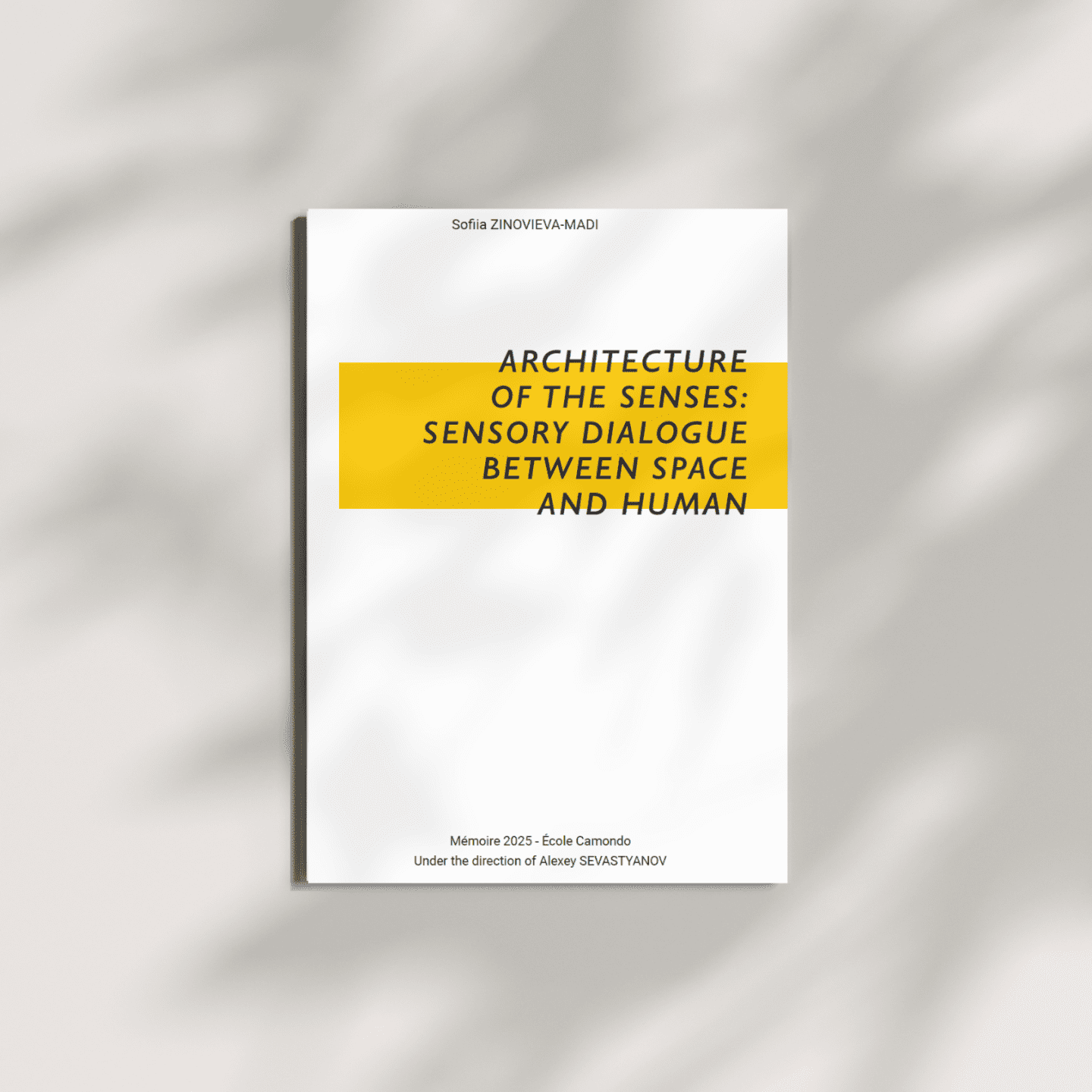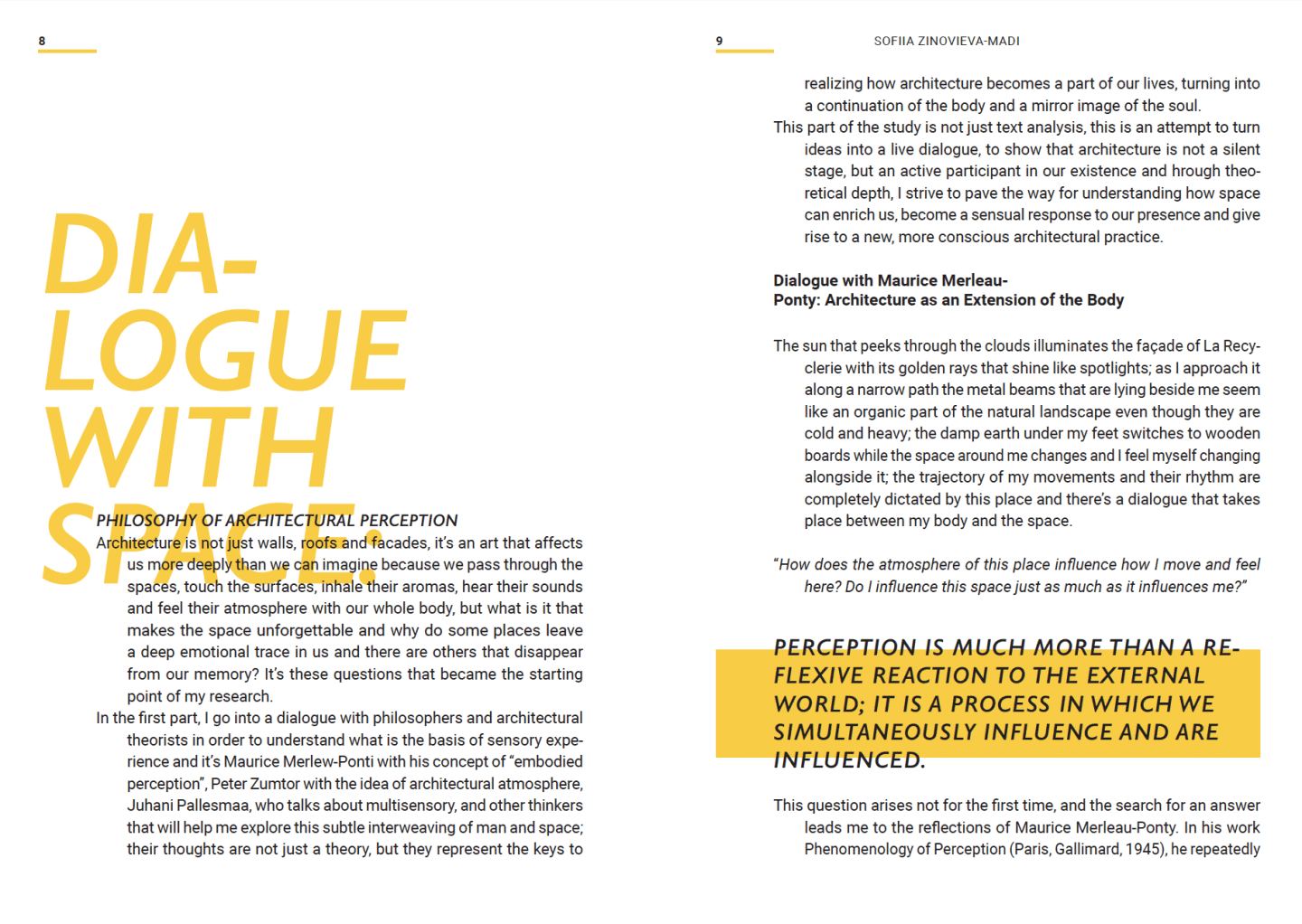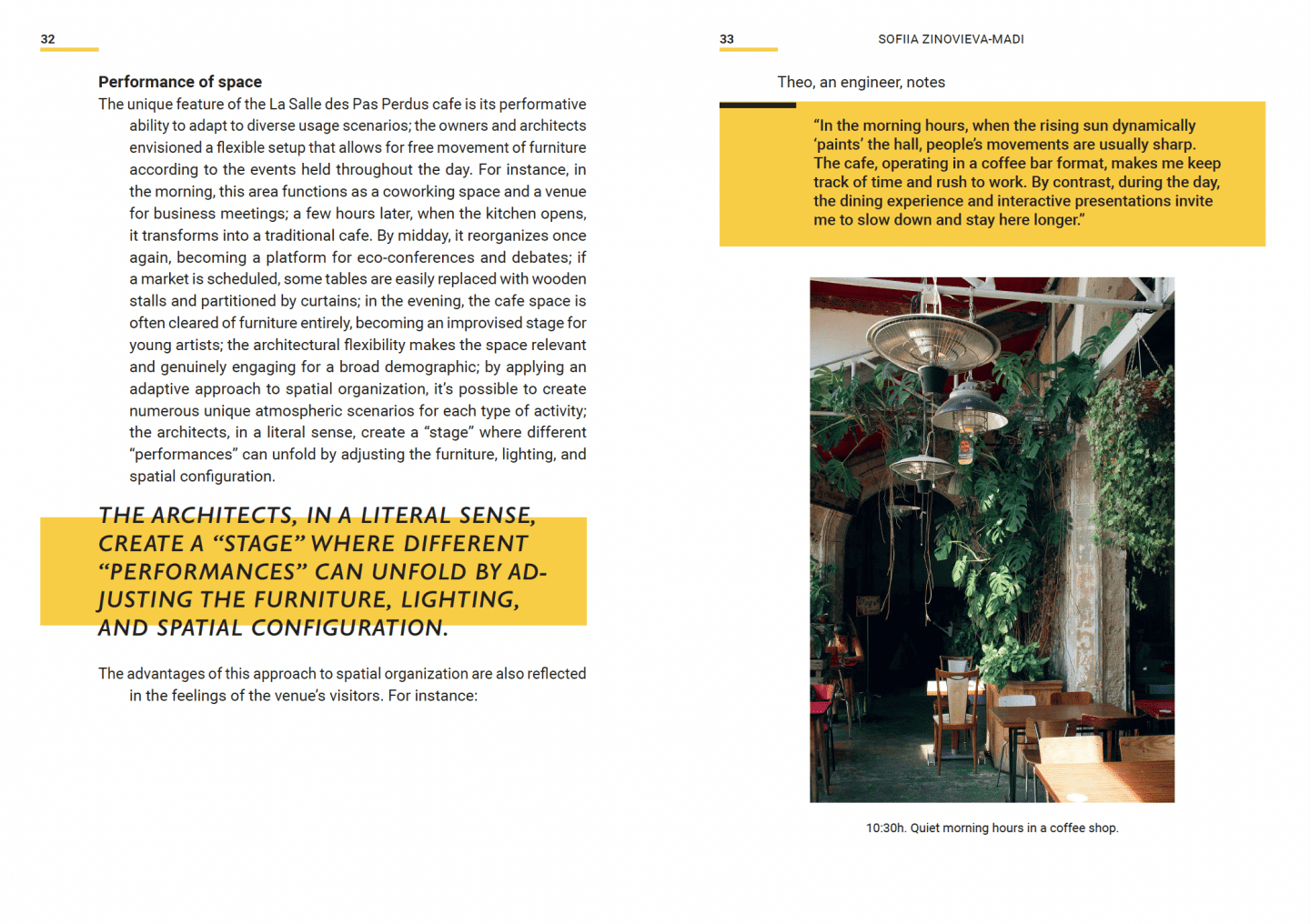“Our eyes hear, our ears see, and our skin speaks”.
The first part was conceived as a phenomenological investigation, framed through an internal dialogue between my consciousness and the space I occupied. Spatial experiences evoked embodied reflections, which were interpreted through the theoretical frameworks of Heidegger, Bachelard, Merleau-Ponty, Schulz, and Zumthor.
PERCEPTION IS MUCH MORE THAN A REFLEXIVE REACTION TO THE EXTERNAL WORLD; IT IS A PROCESS IN WHICH WE SIMULTANEOUSLY INFLUENCE AND ARE INFLUENCED.
The second part focused on developing a cartography of senses within the abandoned petite ceinture, chosen for its raw sensory intensity. Through spatial scenarios and interviews with visitors, I was able to validate, in practice, the theoretical insights from the first part — confirming how environments activate perception beyond visual.
IT’S NOT ME BRINGING IN MY FEELINGS, BUT RATHER THE PLACE ITSELF SHAPING AND “GUIDING” ME TOWARD A PARTICULAR STATE.
The third part extrapolated the previous findings to the urban scale, exploring how cities can become more human-centered. Based on this, I formulated key principles for sensorially responsive design that fosters emotional and physical well-being in public space.






